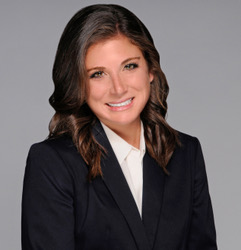By Danielle Steinberg
The pit in my stomach was growing larger with each step I took as I walked ever closer and closer to the front door of the children's hospital where I was going to begin my pediatric clerkship. As a third-year medical student, I often find myself uncertain about my role on the medical team, insecure about the depth of my medical knowledge and whether the residents find my presence annoying or helpful. Third year is like being thrown into the deep end without knowing how to swim, and as you frantically kick your legs closer to the surface of the water, finally about to take a breath, you are thrust into your next rotation.
I reached out my nervously shaking hand and opened the door; as the whoosh of cool air conditioning swept over me, all of my anxiety seemed to evaporate.
Floor-to-ceiling windows lined the lobby, allowing the bright sun to drown out the hospital's fluorescence. A volunteer dressed as a clown for the children even made the busiest physicians slow down as they passed and smile. The bright colors of the walls almost made me forget I was in a hospital. I immediately felt at ease. It was like magic. I guess that is the point.
There is something so special about being in a children's hospital. I could not help but notice the stark contrast between this place and the adult hospital just across the street where I had done my other rotations. In the children's hospital, everything was brighter: it wasn't just the lighting, but the overall feeling I had the moment I walked inside. Gone were the exhausted-appearing medical personnel who rushed through the halls without bothering to make eye contact as we passed. Instead, I found people actually returning the overeager medical student grin eternally plastered on my face. Gone were the patients who had to force themselves from their beds to walk a lap around the ward. Instead, the pediatric patients zoomed through the halls, IV poles in tow, determined not to allow their stay in the hospital to deter their playtime. And gone were the patients who seemed to come into the hospital, endure complication after complication, and stay for weeks on end. Instead, for the most part, the pediatric patients are admitted, often get better, and leave the hospital. Every time I left a patient's room, I always found myself smiling and filled with more vigor than when I entered, feeding off of the boundless energy of the children. I could feel this energy translate into the way I carried myself around the hospital. I felt more confident and comfortable in a role where I constantly doubt myself and feel out of place.
At first, I thought the palpably positive energy was more of an act for the children. As if as long as people keep smiling, they won't realize they are sick. There seemed to be a mutual understanding between all hospital personnel to preserve the patients' innocence at all costs. Serious conversations with parents are reserved for outside the door—smiles only in the patient rooms.
I can't help but wonder, why is this magic reserved exclusively for children's hospitals? Why is it that when you step into an adult hospital, the once colorful walls are drained of any vibrancy and are instead replaced with sterile white paint and pictures that seem to be the same no matter where you go? The once vast windows that allowed natural light to illuminate the patient rooms are replaced with blindingly bright fluorescence. The friendly volunteers whose sole purpose is to make each child's experience in the hospital as pleasant as possible simply don't exist in abundance within adult hospitals. The boundless resources available to pediatric patients to ensure that they forget where they are, at least for a short while, somehow evaporate the moment a child turns 18 and is thrust into “adulthood” and the world of adult hospitals. Why is it that we seem to disregard the value of an older patient's smile and so actively strive to ensure that we keep our pediatric patients smiling?
Medical school seems to chip away at a person's childlike exuberance. We enter school eager and spirited and graduate serious and stern. Many studies show that empathy among medical students wanes as they progress through their clinical years. Empathy, compassion, and humanity are key components of high-quality patient care, and if we allow those elements to wane through our training and careers, how will that affect our relationships with our patients, clinical outcomes, and our own burnout? Most of us chose a career as a physician to help others. We envisioned ourselves as the person who establishes trust and meaningful relationships in order to guide our patients through the most vulnerable moments of their lives. Somehow, during our clinical years, we seem to forget that the person in the hospital gown is more than just a patient. We think of our patients as “the cirrhotic guy in room 4” or “the COPD’er with the trach” rather than by name. I think through this lack of personal connection, we forget about why we entered the medical field in the first place.
Looking back on the first day of my pediatrics rotation, I was first calmed by the appearance of the children's hospital. However, I think it was the smiling faces, bubbly spirits, and unyielding dedication to keeping the pediatric patients happy that uplifted and enhanced the hospital's aesthetic and instantly soothed my anxieties. I can't help but wonder what would happen if we replace the sterile walls of adult hospitals with colorful artwork, remember ourselves as naive, overeager medical students, and reflect on the reasons we chose this field—perhaps adult hospitals could have that same magic.

Danielle Steinberg
Florida Atlantic University
Charles E. Schmidt College of Medicine
Graduating Class of 2020

